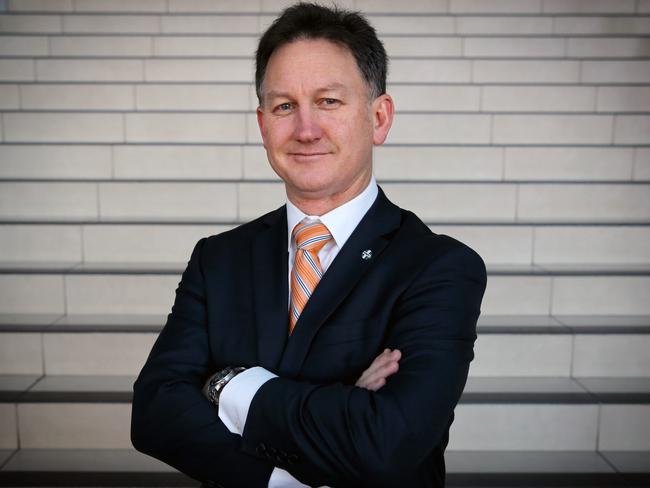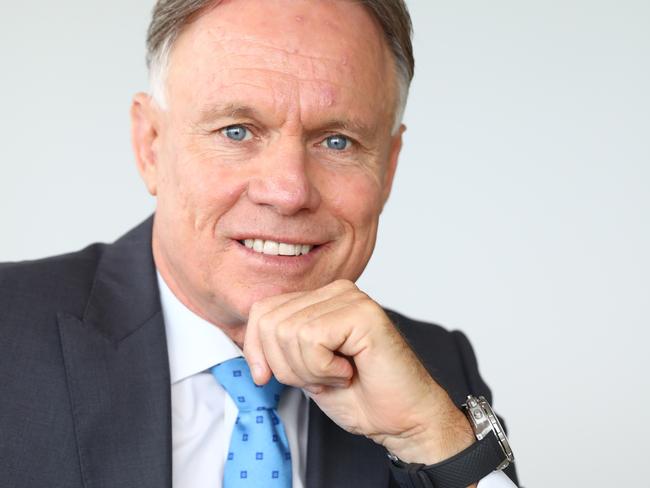The health fund that pays benefits 66 per cent lower than its rivals
SOME health funds are paying two thirds less than their rivals for the same hospital procedure leaving members with massive out-of-pocket bills. How does your fund stack up?

Health
Don't miss out on the headlines from Health. Followed categories will be added to My News.
SOME health funds are paying up to 25 per cent less than their rivals for the same hospital procedure leaving their members at risk of massive out-of-pocket medical bills.
A News Corp Australia comparison of the rebates provided by the top four providers shows health fund NIB pays the lowest rebates of the big four health funds on three out of four common procedures.
Health fund HCF consistently pays the highest benefits and Bupa is the next best payer.
As health fund premiums rise by an average $200 per annum today, the Australian Medical Association has warned consumers if they choose a product with cheaper premiums they may face big gap payments when they use it.

News Corp Australia revealed last week that patients are being forced to raid their superannuation and appeal to charity to cover massive out-of-pocket medical expenses of up to $70,000.
This is partly because some doctors are charging patients up to 10 times the AMA’s recommended fees. News has produced a fee calculator to help tell if your doctor is overcharging.
The other reason for the gaps is inadequate health fund rebates — most health funds do not provide cover up to the level of the AMA recommended fee and some provide very minimal coverage and this can lead to big out of pocket expenses for patients.
A News Corp Australia comparison of the health fund rebates for 20 common medical procedures highlights the variation to help consumers see the best value products.
The comparison shows mutual health fund HCF pays doctors much higher benefits than the for-profit health funds Bupa, Medibank and NIB.

NIBs rebates for hip and knee replacements are 20 per cent lower than HCFs.
Medibank rebates for the same procedures are 20 per cent lower than HCF and BUPA’s are 15 per cent lower than HCF.
NIB pays $1550.95 for a birth which is 25 per cent lower than HCF which pays $2058.95; Medibank pays $1886 and Bupa $2057. No health fund covers to the level of the AMA’s recommended fee which is $3076.
Fees at some health funds also vary by state. Bupa pays doctors in Victoria $2468 for a hip replacement but doctors in NSW get paid just $2109 for the same operation.

AMA president Michael Gannon says the majority of doctors will usually accept the rebate provided by the health fund and won’t charge their patients a gap even though it means they get paid less than the AMA fee.
However, Dr Gannon added: “There is less chance of a gap fee if your insurer pays more.”
NIB CEO Mark Fitzgibbon said in nine out of 10 cases NIB members do not pay an out of pocket expense as the specialist accepts the fund’s “Medigap” arrangement.
“Our Medigap schedule offers a payment on average almost 40 per cent above the Medicare
benefit and we believe it is reasonable and fair. The AMA’s observation that in some cases it may be lower than some other health insurers is moot,” he said.
“First, there is no correlation between specialist fees and clinical quality. Second, both the patient and public interest are ultimately best served by their health insurers seeking cost effective no gap arrangements,” Mr Fitzgibbon said.
Medibank spokesman Andrew Wilson said it paid doctors more than $500 million in the last financial year.
“According to the AMA’s own data that they have recently published nearly 90 per cent of operations are provided by doctors at no gap; another five or six per cent at known gap of less than $500,” Dr Wilson said.

HCF CEO Sheena Jack said her fund was currently the only fund in the market to still have a no gap scheme in place.
“We know not all doctors who agree to be part of the scheme use it all the time so we encourage our members to first choose a participating specialist, with their GP or by using our website (https://www.hcf.com.au/locations/find-a-participating-provider) or healthshare.com.au,” she said.
Private Healthcare Australia’s Rachel David welcomed increased transparency about health fund rebates but said the size of the rebates made no difference to patients if their doctor had signed a no or known gap agreement with their health fund.
However, industry data shows many doctors don’t sign up to these gap agreements.
Four in 10 people having hip and knee replacement face gap fees, one in four having gall bladder surgery, and so do around one in three people who have obesity surgery or a bowel resection.
And she warned that the AMA’s advice that patients switch to not for profit funds which pay higher benefits could be counter-productive.
“They have picked up a whole lot of patients who need surgery and they may have to limit their gap cover, this can create a migration of patients who know they are going to claim,” Dr David said.
A new Morgan Poll has found consumers no longer trust health insurers.
The poll found health funds have a trust score of -2.6%, which is lower than retail and travel and sits between gambling, real estate and fast moving consumer goods.
“There is no doubt that when a patient has to pay an unexpected gap at a doctor’s surgery or hospital, they do not blame the health professionals, they blame their private health fund,” said Roy Morgan CEO Michele Levine.
